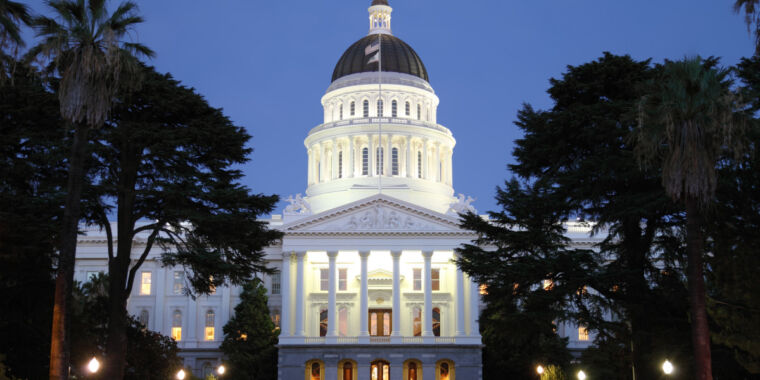Debate over “open source AI” term brings new push to formalize definition

Enlarge / A man peers over a glass partition, seeking transparency.
The Open Source Initiative (OSI) recently unveiled its latest draft definition for “open source AI,” aiming to clarify the ambiguous use of the term in the fast-moving field. The move comes as some companies like Meta release trained AI language model weights and code with usage restrictions while using the “open source” label. This has sparked intense debates among free-software advocates about what truly constitutes “open source” in the context of AI.
For instance, Meta’s Llama 3 model, while freely available, doesn’t meet the traditional open source criteria as defined by the OSI for software because it imposes license restrictions on usage due to company size or what type of content is produced with the model. The AI image generator Flux is another “open” model that is not truly open source. Because of this type of ambiguity, we’ve typically described AI models that include code or weights with restrictions or lack accompanying training data with alternative terms like “open-weights” or “source-available.”
To address the issue formally, the OSI—which is well-known for its advocacy for open software standards—has assembled a group of about 70 participants, including researchers, lawyers, policymakers, and activists. Representatives from major tech companies like Meta, Google, and Amazon also joined the effort. The group’s current draft (version 0.0.9) definition of open source AI emphasizes “four fundamental freedoms” reminiscent of those defining free software: giving users of the AI system permission to use it for any purpose without permission, study how it works, modify it for any purpose, and share with or without modifications.
By establishing clear criteria for open source AI, the organization hopes to provide a benchmark against which AI systems can be evaluated. This will likely help developers, researchers, and users make more informed decisions about the AI tools they create, study, or use.
Truly open source AI may also shed light on potential software vulnerabilities of AI systems, since researchers will be able to see how the AI models work behind the scenes. Compare this approach with an opaque system such as OpenAI’s ChatGPT, which is more than just a GPT-4o large language model with a fancy interface—it’s a proprietary system of interlocking models and filters, and its precise architecture is a closely guarded secret.
OSI’s project timeline indicates that a stable version of the “open source AI” definition is expected to be announced in October at the All Things Open 2024 event in Raleigh, North Carolina.
“Permissionless innovation”
In a press release from May, the OSI emphasized the importance of defining what open source AI really means. “AI is different from regular software and forces all stakeholders to review how the Open Source principles apply to this space,” said Stefano Maffulli, executive director of the OSI. “OSI believes that everybody deserves to maintain agency and control of the technology. We also recognize that markets flourish when clear definitions promote transparency, collaboration and permissionless innovation.”
The organization’s most recent draft definition extends beyond just the AI model or its weights, encompassing the entire system and its components.
For an AI system to qualify as open source, it must provide access to what the OSI calls the “preferred form to make modifications.” This includes detailed information about the training data, the full source code used for training and running the system, and the model weights and parameters. All these elements must be available under OSI-approved licenses or terms.
Notably, the draft doesn’t mandate the release of raw training data. Instead, it requires “data information”—detailed metadata about the training data and methods. This includes information on data sources, selection criteria, preprocessing techniques, and other relevant details that would allow a skilled person to re-create a similar system.
The “data information” approach aims to provide transparency and replicability without necessarily disclosing the actual dataset, ostensibly addressing potential privacy or copyright concerns while sticking to open source principles, though that particular point may be up for further debate.
“The most interesting thing about [the definition] is that they’re allowing training data to NOT be released,” said independent AI researcher Simon Willison in a brief Ars interview about the OSI’s proposal. “It’s an eminently pragmatic approach—if they didn’t allow that, there would be hardly any capable ‘open source’ models.”
Debate over “open source AI” term brings new push to formalize definition Read More »



